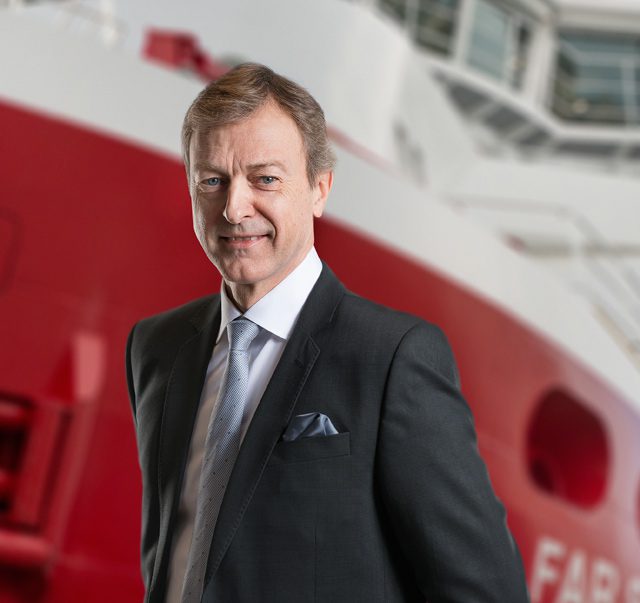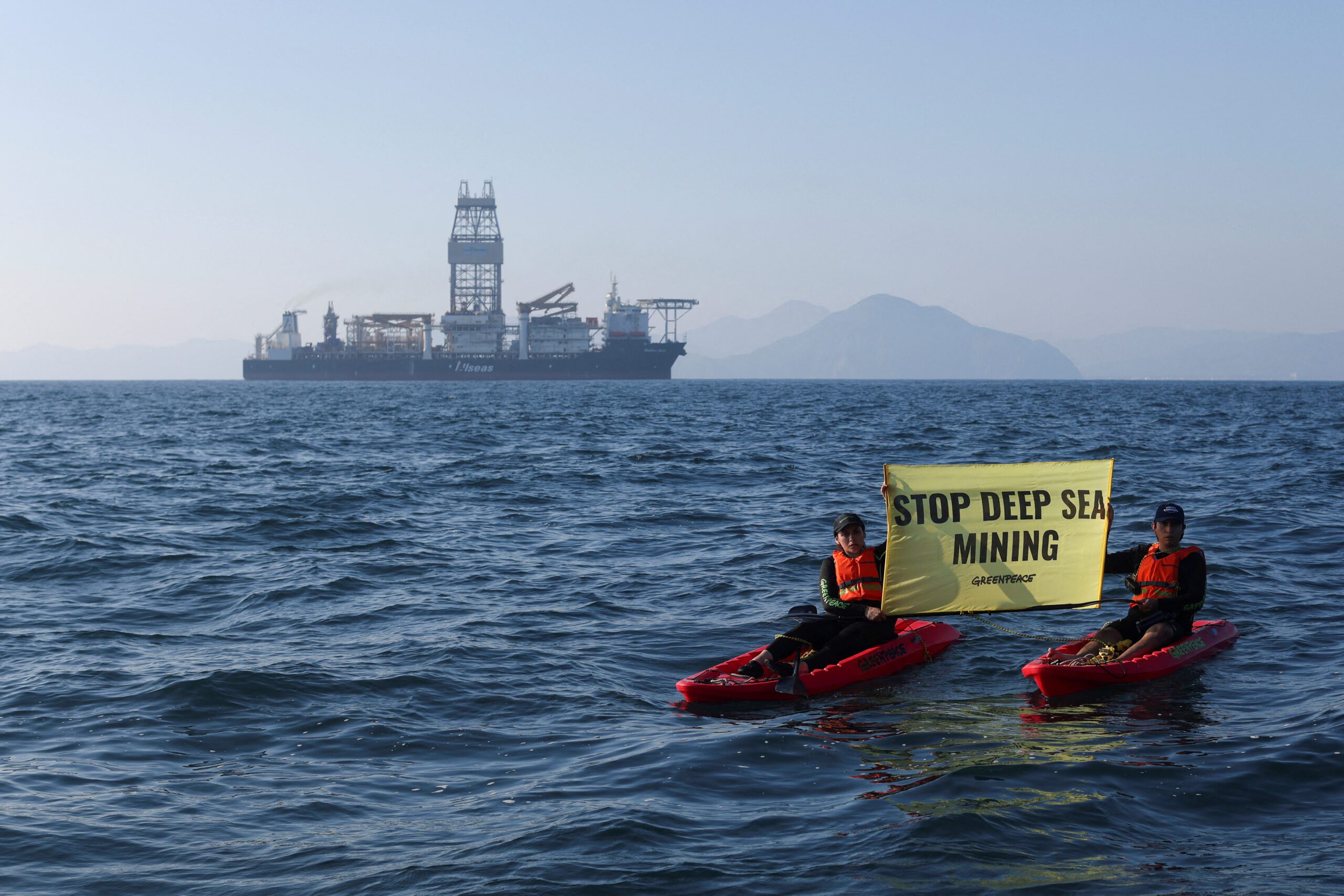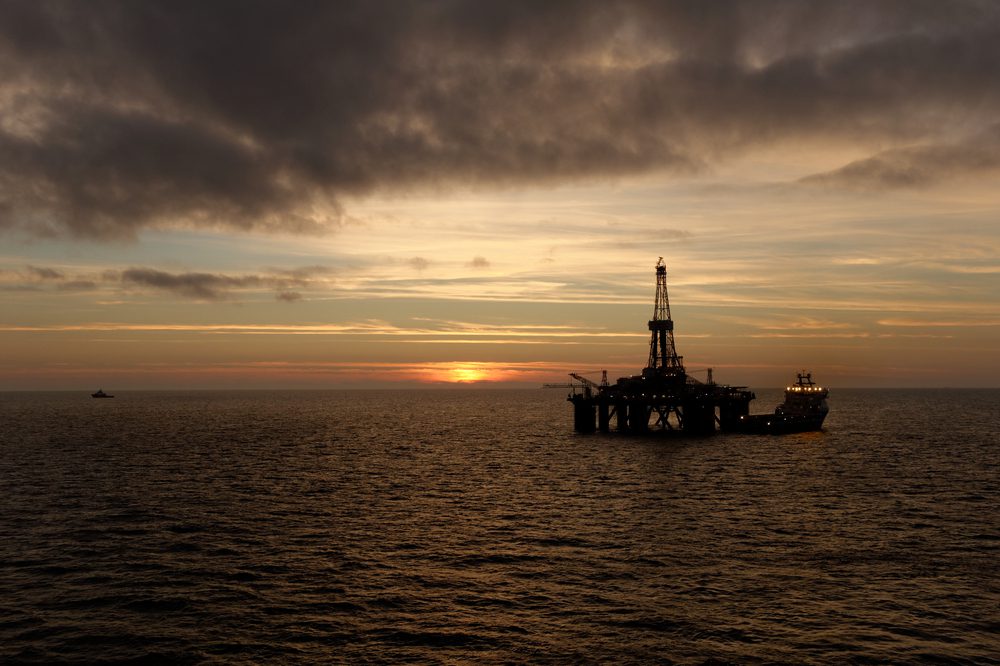
Karl-Johan Bakken, Chief Executive of Ålesund-based Farstad Shipping (OSE: FAR), got his start in the maritime industry in the mid 1980s as a naval architect at the Ulstein Group, where he learned under the mentorship of Chief Designer Sigmund Borgundvaag.
During that time, the offshore sector grew rapidly and Ulstein’s growth progressed in lock step with one of the strongest reputations in the industry. In 1999, the Ulstein family decided to cash out via a public offering of the company’s shares and ownership quickly switched hands to Vickers Group. In less than a year, the business was again sold to Rolls-Royce; everything except the shipbuilding group which had remained under the control of the Ulstein family.
For Bakken, 1999 marked a professional turning point and he moved on to a new role at Farstad Shipping within the company’s chartering and operations department. 6 years later, he took over as CEO of Farstad.
While visiting Ålesund this summer, I met up with Mr. Bakken.
Since 1999, how has your company evolved?
Since 1999, the company has grown with the rest of the industry. As a shipping company we have doubled our fleet to around 60 ships. We have a very modern fleet now as many of our older ships have been phased out over that period.
Operationally, we have a long history of operating offshore Brazil and have joint ventures in both Brazil and in Australia. Looking ahead though, you will see that Farstad will be tracing and competing in areas where operations are complex and demanding.
Instead of trending on the commoditized areas, we focus our operations in the complex areas.
How do you see the market shaping up?
It is difficult these days due to the general oversupply of ships in the market in general, and it’s not in a specific tonnage range either. Part of the game is that there is a shorter timeframe to build a supply vessel than a rig. Once a rig is ordered, you have all the time in the world to build the requisite the support fleet which ultimately eliminates big rewards over a longer period.
If you want to stay in this game you have to be good, manage costs and deliver a high quality product. If you’re trying to capitalize on a hot area of the market, you’re likely already at the dying end of that good story.
Looking ahead, it seems Brazil is becoming a more and more difficult place to work… is it?
Interesting question. As you say the general opinion is yes, it is becoming a more difficult place to be for a number of factors. And we’ve seen he same due to the inherent operational and political complexity of that region.
Any plans for fleet expansion?
We’ve had quite a hefty new building program over the past 10 years and today we have two large PSVs on their way plus two large subsea construction vessels in the next year.
Beyond that, you’ll have to wait and see…
Are your clients willing to charter more expensive ships if they are more environmentally-friendly?
No. They say so, but you don’t see it.
If the answer was yes, then I would have to point at a number of charter parties that has ended up in the favor of more green solutions. But they haven’t been taken because they have been marginally more expensive. As long as the cost is even, it’s a good choice, but otherwise a steep uphill.
If you want to boost more environmentally-friendly operations, it needs to be incentivized.
That’s not to say though that LNG fuel isn’t being used of course, but looking at the PSV fleet , you will find some LNG-fueled examples, but not as many as there could be. On the Norwegian coastline, it wouldn’t take too much to develop the required LNG support network.
What are your clients asking for these days?
There is a dilemma in the market.
To a large extent the competition within some segments results in over-specification of services. Clients in the North Sea are frankly spoiled as they receive much more capability than what the operations typically require in terms of capacity, equipment and complexity of the ships.
As such, extensive technical development coupled with operational skills is a rock solid requirement to ensure safe operations. This however, is adding costs to our operations, while our clients are becoming more and more cost-focused.
The discrepancy in how the development is trending… if you scratch down the margins too much, the shipowners are unable to sustain enough activity to secure competency or sustainability.
Where is Farstad in five years?
You will see us having a strong position in the segments we are in currently, more strongly in subsea and anchor handling while trending in the complex end of the offshore sector.
Some interesting challenges are up north if the environment issues are dealt with in a proper manner..
What are your thoughts on arctic exploration and production activities?
So far it looks like they have set aside a balance of numbers to see what the potential is, but the costs are not sustainable at the moment.
Farstad Shipping is publicly-listed on the Oslo stock exchange under ticker FAR. As of 1Q 2014, the company had 18 vessels operating off Brazil, 2 off southeast Africa, 14 in the North Sea, 21 off Australia and 5 in southeast Asia. The company’s assets include 32 AHTS’, 25 PSVs, 3 subsea construction vessels plus 4 newbuilds.

 Join The Club
Join The Club











